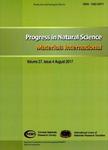Growth potential of human hepatocarcinoma cells in the liver of neonatal immunocompetent mice and its relation to immunological tolerance
Growth potential of human hepatocarcinoma cells in the liver of neonatal immunocompetent mice and its relation to immunological tolerance作者机构:Laboratory for Developmental Immunology School of Life Science Shandong University Jinan 250100 China China Rural Technology Development Center Beijing 100045 China
出 版 物:《Progress in Natural Science:Materials International》 (自然科学进展·国际材料(英文))
年 卷 期:2009年第19卷第6期
页 面:705-712页
核心收录:
学科分类:1002[医学-临床医学] 0805[工学-材料科学与工程(可授工学、理学学位)] 100214[医学-肿瘤学] 0702[理学-物理学] 10[医学]
基 金:supported by the National Natural Science Foundation of China (Grant No.30370692)
主 题:Human hepatocarcinoma cell Immunologic rejection Liver microenvironment Neonatal mice Xenograft
摘 要:To determine the pathological behavior of human hepatocarcinoma cells in the liver microenvironment of neonatal non-immunode-ficient mice, three human hepatocarcinoma cell lines (Bel7402, HepG2, and SK-Hep-1), traced by DiI, were transplanted into the intrahepatic or subcutaneous tissue of neonatal and adult Kunming mice. Histopathological observations showed that cells in the adult liver induced a severe immune response as early as the second day after the implantation, while the subcutaneous neoplasm underwent extensive necrosis by the end of the study. Only the cells injected into the neonatal liver underwent a delayed immunologic rejection in the organ microenvironment. These cells retained recognizable tumor features over the first seven days, and displayed an intrahepatic invasive pattern. The expression of tumor markers including alpha-fetoprotein and survivin was maintained. The quantitative ELISA for the expression patterns of IL-2 and IL-10 also confirmed that the intrahepatic immunity was non-susceptive during this period. The high serum alpha-fetoprotein level was inversely correlated with the change in immune response. Our study provided a bio-system for the research of immune responses to xenografts in the liver.



